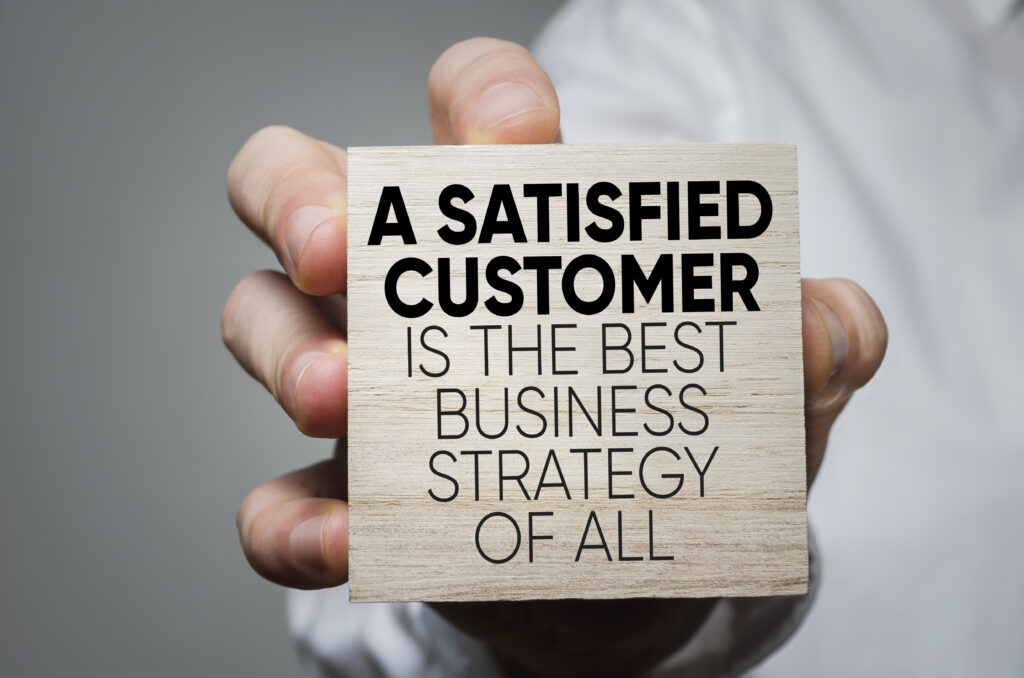Sales professionals have a natural impulse to focus attention on developing new customer relationships to land fresh accounts. It’s a good instinct, but it’s one that needs a bit of balancing. Think of it like juggling flaming torches—you can’t just focus on the new ones without risking burning down your entire circus tent. Customer relationships aren’t over once you close the sale. Nope, that’s just the beginning of a long-term partnership, a beautiful friendship that, if nurtured properly, will benefit both you and your customer for years to come.
Here are some strategies for building—and maintaining—great customer relationships, served with a side of humor.
1. Remember Their Names (And Maybe Their Dog’s Name Too)
Whether you’re working with a small company or a giant corporation, you’re ultimately dealing with an individual—a person who has a family, a birthday, perhaps a new child, or a feisty puppy named Mr. Wiggles. Get to know your customer. Include a few notes in your contact management system to help you remember these personal details. Imagine this: “Hey John, how’s Mr. Wiggles? Still chewing on those shoes?” Boom. Instant connection. People love when you remember the small stuff. Reach out on your customers’ special days and they’ll remember you made that extra effort when it’s time for purchasing decisions.
2. Become a Solution Center (Not Just a Vending Machine)
Offer your customers the resources they need to stay informed about changes, improvements, and updates in the service you provide. If your company offers a newsletter, make sure your customer knows about it. And for the love of everything, make sure it’s not just spammy nonsense. When you find articles, books, or webinars that might be useful, share them. Call out the information that will be valuable to them and their particular problems. Personalize it. Instead of “Here’s a generic link,” try “Hey Sally, I thought this article on advanced sock puppet marketing strategies would be perfect for you!” They’ll appreciate that you took the time to think of them specifically.
3. Monitor Customer Relationships with Social Media (But Don’t Be a Creep)
Research by Zendesk says that 45% of customers share bad experiences and only 30% share good ones on social media. So, follow your customers on their social media accounts like Facebook, LinkedIn, and Twitter. Listen to what they’re saying. If they post a disgruntled tweet about your service, jump on it faster than a cat on a laser pointer. Fix the issue before it spirals into a social media nightmare. But remember, there’s a fine line between being attentive and being creepy. Don’t start liking their vacation photos from 2015. Just. Don’t.
4. Customers Are Team Members (Invite Them to the Party)
Include your customers in events that matter to them, to your company, and to their company. If your department is hosting a networking event or launching a new service, make sure your customer hears about it. Better yet, invite them personally. When you’re working on improving your team’s internal processes, get your customers’ feedback. Ask them what they think about your new idea to replace Monday meetings with interpretive dance sessions. Show them that you value their business and their professional expertise. Treat them like part of the team, because in many ways, they are.
5. Be the Unexpected Delight in Their Day (Like Finding a $20 Bill in Your Pocket)

Everyone loves a good surprise. No, not the “we’re doubling your subscription fee” kind of surprise—the good kind. Like finding an unexpected $20 in your coat pocket. Be that $20 bill. Send a handwritten thank you note, give them a shout-out on social media for their success, or send them a small, thoughtful gift on their business anniversary. It’s these little touches that turn a good relationship into a great one. Your goal is to be the highlight of their day, not just another line item on their to-do list.
6. Keep the Romance Alive (Yes, Business Can Be Romantic)
Customer relationships are a lot like romantic ones. They require attention, effort, and the occasional grand gesture. Don’t let the relationship fizzle out after the first sale. Keep the spark alive with regular check-ins, updates on how your service is evolving, and by continuously showing that you care. Remember, it’s easier to keep an existing customer happy than to woo a new one. So put on that metaphorical cologne and keep the romance alive.
Conclusion: Swim with the Fishes, But Don’t Get Eaten
Building and maintaining customer relationships is like swimming with the fishes—stay alert, keep moving, and don’t let yourself get eaten. Remember their names (and their pets), be a resource, monitor their social media (but don’t be creepy), treat them like team members, be their $20 bill, and keep the business romance alive. These strategies will help you navigate the sometimes choppy waters of customer relationships and come out the other side as a true relationship guru. So go forth, make connections, and may your customer relationships be ever fruitful and free of social media disasters!

